What has been your experience with this? We are using SW’s best latex enamel for trim finish. My painter is not experienced with the preprimed pine, and insists on repriming everything with Binz, a shellac based white primer, before spraying the latex. He claims the latex will show all the places where primer is sanded off, joints and nailholes filled with latex spackle, and such. I think he is wasting my money.
If you are a painter, tell us what you do.
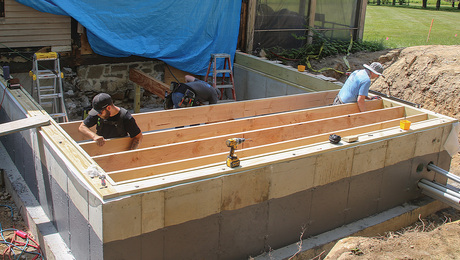
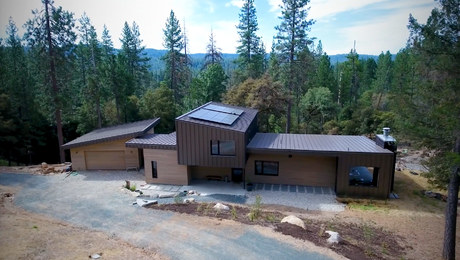
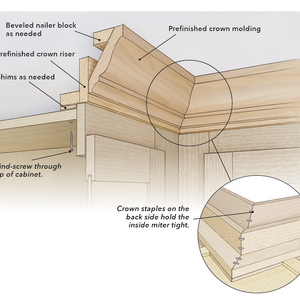

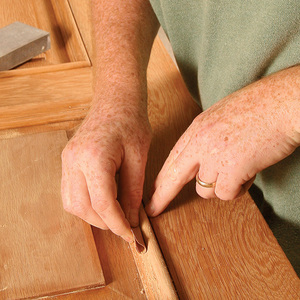




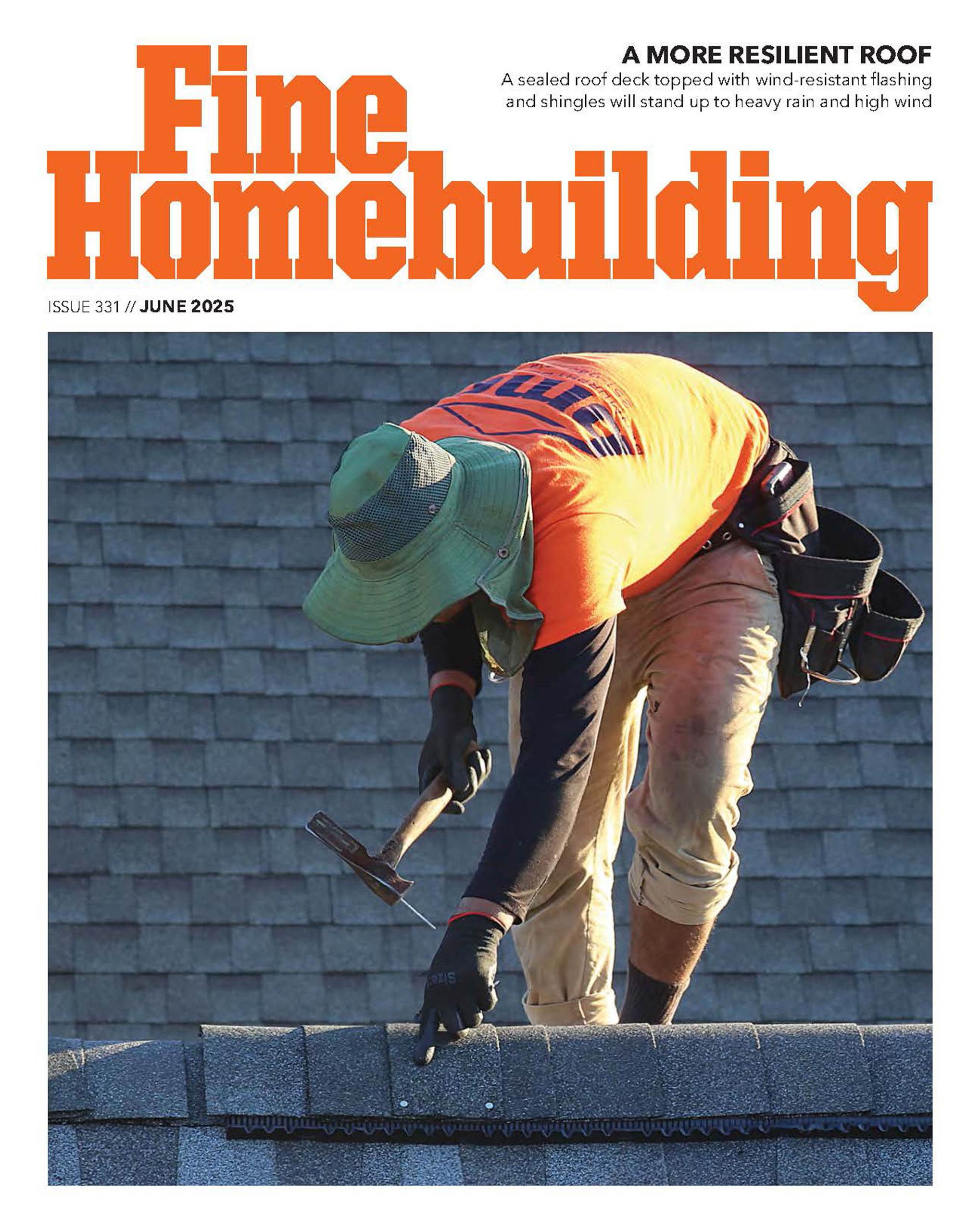









Replies
Sounds like you hired the right painter.
Joe H
But really, two coats of Binz on everything before doing finish? How about just running around once with Binz and a brush and spot priming the areas of concern.
My whole upstairs is finished, and the pine has two coats of primer on from the factory, then two more of Binz, then two and maybe three coats of finish. I think I am being hosed. He is being paid by the hour.
We are into downstairs now and the nailholes are all filled, the joints all caulked. We are masking and bagging in preparation for spray. All that white primed wood is screaming "paint me," and maybe 1/2 of 1 percent of its area is bare wood due to sanding joints.
Mr Micro directing this to you as I percieve you to be top notch craftsman ( from posts that I think I attribute to you )
first of all your first post sounded different than your last - first one mentioned your painter was dealing w/ factory or dealer primed trim I have never thought of that as much better than raw wood ** conditions of wood when applied, conditions of environment where applied, product quality - just a few of the many questionable issues re: pre primed material ** generally just looking at it gives it away as being substandard treatment I'm a biased mother fletcher but I'd say sprayed on primer ( or dipped or washed ) has a quality quotient about 30% of what a brushed primer might attain *** then your second post spoke of the trim ending up w/ two primer coats of BIN
quite a difference but I agree w/ second poster - right painter but then again maybe you or your helper could do the second coat over the spackle, fillers and caulk
that can also be the quality control your painter likes to make before color coats
final coats you mentioned waterbase i think bet it is a good product and I don't mean to question you or your painter ** but a technique I use is primed as we've discussed my next coat is a latex undercoater colored to full color of trim paint then lightly etched if speced by undercoater then one coat Bennie Moore, Prtatt Lambert or my favorite ( could be pretty local Northwest? ) Rhodda enamel cuz they have polyurethane in their Oil paint
you did the trim ya he's going to give it that respect / bounce it deserves
man that caffeine I don't usually touch has got me going today
Mr Micro, you alternate between absolutely first class & cheap sheet.
Do you want a good job, or a good enuff job?
Did you hire the guy outa the yellow pages?
Anyone who is willing to paint trim and do a decent job is a Saint. That he wants to do it right is to bitch about?
Why don't you paint it yourself and save even more money?
Joe H
If you're talking about factory primed trim, my experience has been that the primer used doesn't have much "tooth", and so an application of another primer may be worth it (or else a once-over with a "liquid sandpaper" product).
I think factory primer only serves to protect the wood during shipping. If you get a sprinkle of rain somewhere along the line it could result in the uneven grain raising of an unprotected surface. as far as factory primer as a base coat, that depends on the level of quality you are striving for. most "builders" would spot prime sanded areas and nail holes. most "painters" would prime all with their favorite primer.
If your finish coat is gloss or semi-gloss, the spot prime may telegraph thru and show the difference in primers where a flat or eggshell may not. It mostly depends on where you stand in respect to reflected light.
I dont think your painter is giving you a hose job, just trying to avoid a call-back.
shellac based primer also serves to seal in any sap pockets from bleeding through and to seal any knots that have been camoflauged by the factory primer. Pine has a history of this and sap will bleed through ruining his job, shellac will seal that nasty sticky stuff.
Also primed surfaces must be painted within a fairly quick time period, primers will lose their effectiveness if not painted soon after priming.
Youve hired a good painter, let him do his job.
I generally dislike preprimed trim. In my area, it tends to be milled worse than the unprimed trim that is next to it at the yard. Also, the primer is very questionable both in quality and application. I generally stick with the unprimed product.
If I do end up with some preprimed stock, I put on a full coat of an enamel undercoater. It really makes a difference. If you want proof, take a two foot piece of preprimed baseboard and put a coat of a quality primer-sealer on half. Then take a gloss paint and paint the whole two foot section of baseboard. The half with the primer-sealer will look much better than the half with just the preprimer. You will see better gloss development, better durbility, and a smoother finished surface on the side that was primed again.
Eric
something that hasn`t been mentoned: paint sticks to primer best a short time after the primer has been applied.....
And of course, sanding primer is far easier than sanding finish paint. And the old adage about 99% of the job being preparation applies here.
He might actually be saving you money in the long run.
Often good priming results in one less final coat, which is a big savings in mateials and time spent sanding, cleaning, painting, etc.
JMHO, of courseJake Gulick
Lateapex911@optonline.net
CarriageHouse Design
Black Rock, CT
Let me ask this of all of you that have furnished the paints for a new-house paint job.
Two story house, 44 windows, 19 interior doors, 3 exterior doors, trim mostly 1x4 flat, no crown, no chair. I bought the trim lumber, and can tell you that 3000 lineal feet of board did the whole place. That amounts to about 1300 sf of painted wood trim.
The wood trim product I bought is sold by a California mill and is called Windsor One. It is fingerjointed ponerosa and radiata pine, with two coats of white primer done at the factory. The white primed surface on the A side (the B side is marked "do not show") is smooth as a baby's butt. This stuff is far superior in quality than the fj primed poplar I have used from the plants in Kentucky and Tennessee.
We haven't even scratched the main floor yet. My guy has gone through 8 gallons of Binz primer/sealer and 6 gallons of SW superpaint latex enamel, satin.
Yes, figure it out. 8 gallons of Binz used on maybe 700 sf of preprimed wood. 6 gallons of finish on same. Let's say I am off by a factor of two. 8 gallons of Binz even on 1400 sf of surface is still way way too much paint. We are not talking about painting 100 year old weathered barnboard here. Remember the baby's butt simile.
I just think my guy is streching things somewhat. BTW, he sprays everything. No brushes. Maybe his airless DeVilbiss rig pumps three-quarters of the paint down my drains.
Oops, I forgot. He did the interior doors. That throws me off a little. But still, let me ask you, if you are a good painting contractor. How many coats of your favorite primer do you spray ON TOP OF the factory prime job that comes on a hardboard-skinned door. My guy did three.
I know, I know, if I am such a bitch, I should just paint it myself. But I am too old for this stuff, and besides, the skiing is absolute perfection right now, and it has been a not-so-good winter up until recently.
Well, if you don't want to do it yourself, and if you're not going to fire the guy, then your own peace of mind pretty much requires that you forget about it. Fretting and stewing about how much primer this guy is using will not lead to increased happiness.
Well, you know for a fact he is ripping you off. You can never hire it done as well as you could do it.
I think you're coming down on your painter a little hard this time.
As many have said, you hired the guy, let him do quality work. And I think you would agree that the only job you're interested in is a quality job.
Still, I would propose a compromise. Convince him to paint one room as per your specs, the rest as he would like it. If there is any perceivable difference, determine what the difference is worth and make your decision. If not, I would strongly suggest that he be more open to your idea.
You did say you are paying him hourly, so I think you have much more latitude to express your concerns of the quality/cost issue.
Jon Blakemore
I dont know the characteristics of radiata pine but I know ponderosa pine is crap. thats probably why they are selling it preprimed. it is very heavy grained and sappy. the pine will soak up the primer like a sponge. and if he is spraying the stuff you can expect to lose 20% in overspray, but he will more than make up the difference in time.
like any trade there are different kinds of painters. Some guys would paint right over a cigarette but left on a window sill. I think the guy is doing a nice job for a you, but if you get on his back for a few cans of paint, he is only going to do what it takes to get out of there. my advice, back off. you can't complain untill you see the finished product.
steve
Here is an update. It may paint more clearly the picture of how I think I am being taken advantage of.
I turned over this new-construction job to the painter in two stages . . . top bedroom floor first, then main floor. Instead of working efficiently, filling and prepping and masking all work first on a whole floor, he does a room at a time, and sometimes, if the room is large, not even the whole room.
He is trying that now on the downstairs but I keep hounding him to prep and prep so as to get it all done, then do spray all at once. It is like pulling teeth. If I am not there with him to see that it is done this way, he reverts back to his nibbling. I was too late to catch him, and he had stopped and sprayed about 25 percent of the available surfaces. I stayed with him for two straight sessions to push for all the remaining work to get ready and done in one spray-up session, sequential coats, 40 minutes apart.
His problem is that he wants to sand between every coat, which makes him want to do a little, then spray, then come back the next day to sand and coat again. I have demonstrated to him what I want, which is a really really good sand and prep, a very very complete dustdown and tackrag, then multiple coats in the same session, to finish up in one spray session. He is fighting me on this, but I am contending that is the way the painting pros do it. He has been painting for 20 years, and should have developed better efficiencies.
What aggravated me last week, was seeing finish coat going onto open-shelf casework, and seeing some of the areas not coated at all, which will necessitate another coat. I should not have to follow a pro around and point out to him what he is missing.
I would fire him right now, but I cannot find anyone else to do this work using spray equipment. I should not have been so set in my desire to have this work sprayed, and just hired a good brush crew.
Micro,
How is your relationship structured? From what I remember, he's an hourly employee, right? Does he provide his own equipment? Is there any reason you should be giving him more than a marginal amount of latitude?
I would have a talk with him. If he wants to do it his way, then pay him by the piece and you can exclude alot of stress. If he's to stay as an employee, give him the Jeff Buck pep talk (I sign the checks, right? So...)
Good luck.
Jon Blakemore
I can agree with up to two coats of primer, with sanding of each coat. If he's a competent sprayer he's then good to go for the top coats.
I can't agree with his stop and go method - prep a little, paint a little, repeat. That is far from efficient and if you are paying by the hour you are probably paying for ALL the setup and cleanup time, too.
Also, with stop and go there is a better than even chance he will miss part of the prep. I think you already posted something to that effect. Excessive cycling (setup - cleanup) is also responsible for wasted product other than the overspray.
He may very well be an excellent painter and the finished product will show that skill but I think you have every right (it's your checkbook) to insist on economy of motion and have him do just one step at a time.